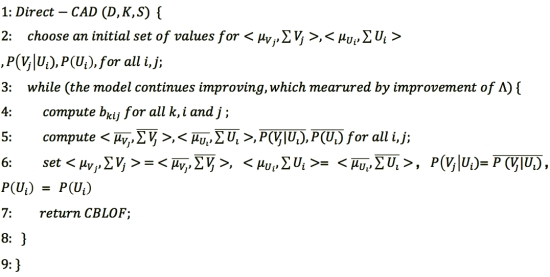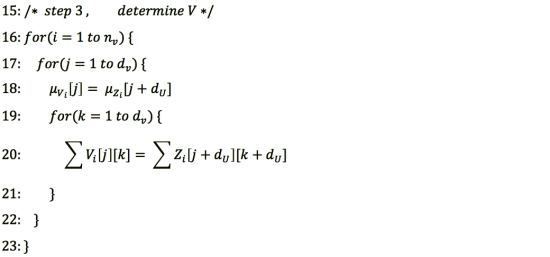 Detecting novelty in text, topic detection, and mining contextual outliers
by Richard Heimann, Nathan Danneman, Pradeepta Mishra, Bater Makhabel
R: Mining Spatial, Text, Web, and Social Media Data
Detecting novelty in text, topic detection, and mining contextual outliers
by Richard Heimann, Nathan Danneman, Pradeepta Mishra, Bater Makhabel
R: Mining Spatial, Text, Web, and Social Media Data
- R: Mining Spatial, Text, Web, and Social Media Data
- Table of Contents
- R: Mining Spatial, Text, Web, and Social Media Data
- R: Mining Spatial, Text, Web, and Social Media Data
- Credits
- Preface
- 1. Module 1
- 1. Warming Up
- 2. Mining Frequent Patterns, Associations, and Correlations
- An overview of associations and patterns
- Market basket analysis
- Hybrid association rules mining
- Mining sequence dataset
- The R implementation
- High-performance algorithms
- Time for action
- Summary
- 3. Classification
- Classification
- Generic decision tree induction
- High-value credit card customers classification using ID3
- Web spam detection using C4.5
- Web key resource page judgment using CART
- Trojan traffic identification method and Bayes classification
- Identify spam e-mail and Naïve Bayes classification
- Rule-based classification of player types in computer games and rule-based classification
- Time for action
- Summary
- 4. Advanced Classification
- 5. Cluster Analysis
- 6. Advanced Cluster Analysis
- Customer categorization analysis of e-commerce and DBSCAN
- Clustering web pages and OPTICS
- Visitor analysis in the browser cache and DENCLUE
- Recommendation system and STING
- Web sentiment analysis and CLIQUE
- Opinion mining and WAVE clustering
- User search intent and the EM algorithm
- Customer purchase data analysis and clustering high-dimensional data
- SNS and clustering graph and network data
- Time for action
- Summary
- 7. Outlier Detection
- Credit card fraud detection and statistical methods
- Activity monitoring – the detection of fraud involving mobile phones and proximity-based methods
- Intrusion detection and density-based methods
- Intrusion detection and clustering-based methods
- Monitoring the performance of the web server and classification-based methods
- Detecting novelty in text, topic detection, and mining contextual outliers
- Collective outliers on spatial data
- Outlier detection in high-dimensional data
- Time for action
- Summary
- 8. Mining Stream, Time-series, and Sequence Data
- 9. Graph Mining and Network Analysis
- 10. Mining Text and Web Data
- A. Algorithms and Data Structures
- 2. Module 2
- 1. Data Manipulation Using In-built R Data
- What is data mining?
- Introduction to the R programming language
- Data type conversion
- Sorting and merging dataframes
- Indexing or subsetting dataframes
- Date and time formatting
- Creating new functions
- Loop concepts - the for loop
- Loop concepts - the repeat loop
- Loop concepts - while conditions
- Apply concepts
- String manipulation
- NA and missing value management
- Missing value imputation techniques
- Summary
- 2. Exploratory Data Analysis with Automobile Data
- Univariate data analysis
- Bivariate analysis
- Multivariate analysis
- Understanding distributions and transformation
- Interpreting distributions
- Variable binning or discretizing continuous data
- Contingency tables, bivariate statistics, and checking for data normality
- Hypothesis testing
- Non-parametric methods
- Summary
- 3. Visualize Diamond Dataset
- 4. Regression with Automobile Data
- 5. Market Basket Analysis with Groceries Data
- 6. Clustering with E-commerce Data
- 7. Building a Retail Recommendation Engine
- 8. Dimensionality Reduction
- 9. Applying Neural Network to Healthcare Data
- 1. Data Manipulation Using In-built R Data
- 3. Module 3
- 1. Going Viral
- 2. Getting Started with R
- 3. Mining Twitter with R
- 4. Potentials and Pitfalls of Social Media Data
- 5. Social Media Mining – Fundamentals
- Key concepts of social media mining
- Good data versus bad data
- Understanding sentiments
- Sentiment polarity – data and classification
- Supervised social media mining – lexicon-based sentiment
- Supervised social media mining – Naive Bayes classifiers
- Unsupervised social media mining – Item Response Theory for text scaling
- Summary
- 6. Social Media Mining – Case Studies
- A. Conclusions and Next Steps
- Bibliography
- Index
If each of the data instances in the training dataset is related to a specific context attribute, then the dramatic deviation of the data point from the context will be termed as an outlier. There are many applications of this assumption.
The summarized pseudocodes of the CAD algorithm are as follows:

The following are the summarized pseudocodes of the GMM-CAD-Full algorithm:





The summarized pseudocodes of the GMM-CAD-Split algorithm are as follows:

Look up the file of R codes, ch_07_ contextual _based.R, from the bundle of R codes for the previously mentioned algorithms. The codes can be tested with the following command:
> source("ch_07_ contextual _based.R")
One application of outlier detection is in finding novel topics in a collection of documents or articles from newspapers. Major detection includes opinion detection. This is basically an outlier among a lot of opinions.
With the increase in social media, there are many events that happen every day. The earlier collection was that of only special events or ideas for related researchers or companies.
The characteristics related to increase in the collection are the various sources of data, documents in different formats, high-dimensional attributes, and sparse source data.
-
No Comment